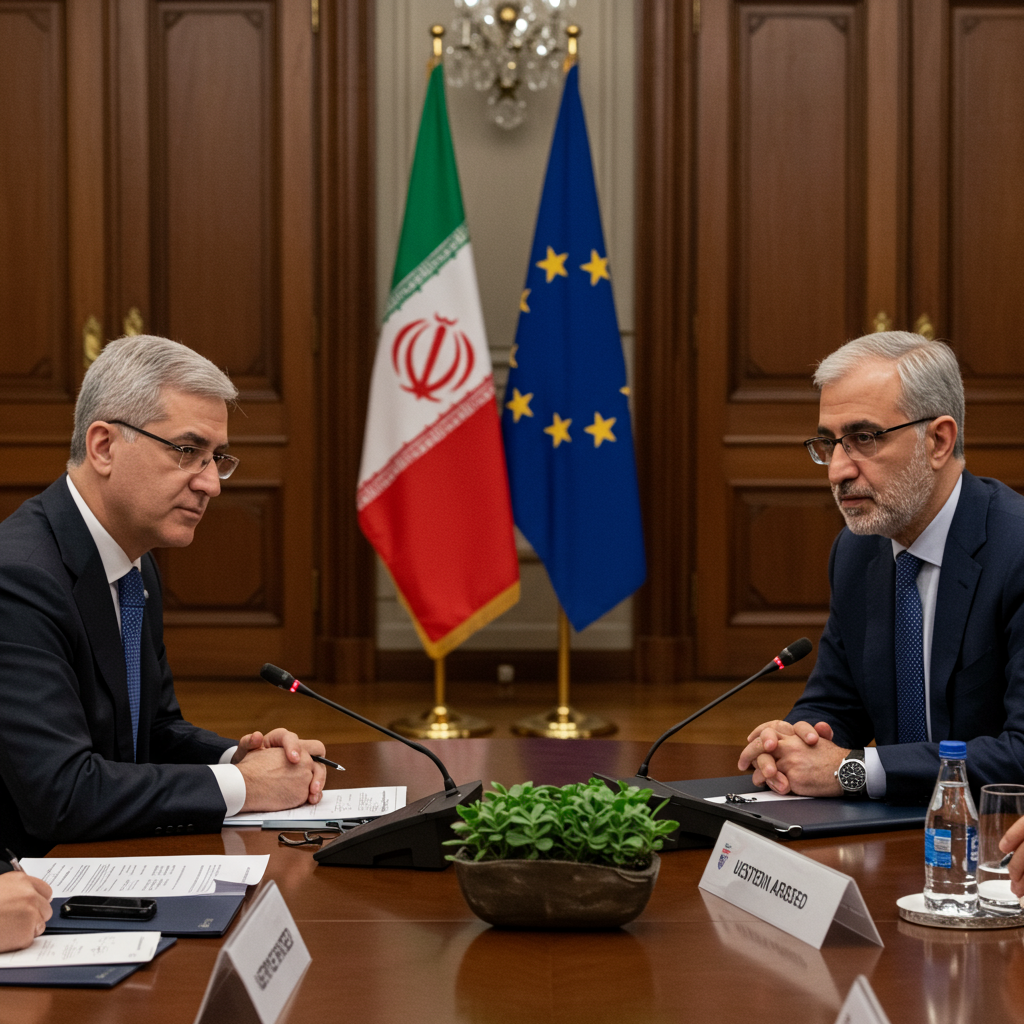The escalating conflict between Israel and Iran has entered its fifth day, marked by intense mutual strikes that are raising fears of a wider regional war. Both nations continue to target military and strategic sites, while the United States weighs its options, including potential direct military action against Iran’s nuclear program.
Key Developments as Conflict Intensifies
Hostilities dramatically escalated as both sides launched significant attacks. Israel reported conducting multiple extensive strikes deep within Iran, targeting dozens of missile and drone facilities, military command centers, and other strategic sites, including those described as being “in the heart of Iran.” Footage verified by external sources showed large plumes of smoke rising from areas like Isfahan province after Israeli strikes.
Iran has retaliated with its own waves of missile and drone attacks targeting Israel. Air raid sirens have sounded across Israeli cities, including Tel Aviv and Jerusalem. Projectile impacts have been reported in central and coastal districts, causing fires and injuries, though some injuries resulted from people running to shelters. The Islamic Revolutionary Guard Corps claimed responsibility for targeting Israeli air bases and specific intelligence buildings in Herzliya (reportedly including Mossad and military intelligence facilities), stating attacks would continue in a “continuous, complex, multi-layered and gradual manner.” Iran’s military also claimed to have used a new, undetectable missile in one strike that penetrated Israeli air defenses.
Beyond military infrastructure, strikes have reportedly hit non-military sites. Iranian state media reported “continuous and intense” explosions in populated areas of Tehran and loud blasts in cities like Tabriz. There were reports of casualties in the city of Kashan and a residential building struck in Tehran. Separately, Israel reportedly struck the Tehran headquarters of Iran’s state broadcaster during a live program and damaged a hospital in Kermanshah.
Targeting Senior Leadership and Strategic Capabilities
Both nations appear to be targeting senior military figures. Israel claimed to have killed General Ali Shadmani in central Tehran, identifying him as Iran’s wartime chief of staff and closest military adviser to the Supreme Leader. This followed the killing of his predecessor just days earlier in Israel’s initial attack.
A key focus of the Israeli campaign is reportedly the destruction of Iran’s nuclear capabilities. Sources indicate satellite imagery suggests direct impacts on underground enrichment halls at the Natanz facility. Experts also point to sites like the deeply buried Fordow facility (estimated 90m deep) as potential targets. Experts suggest that only specific weapons, such as the US-made GBU-57 Massive Ordnance Penetrator bomb, possess the capability to effectively strike such deeply fortified targets.
The United States Weighs Intervention
The potential for US direct involvement remains a critical unknown. US President Donald Trump has issued a series of provocative statements, including calling Supreme Leader Ayatollah Ali Khamenei an “easy target” and demanding “unconditional surrender.” He also claimed the US has “complete and total control of the skies over Iran.” While a US official clarified the US was not involved in Israel’s initial strike, Trump has since indicated future involvement is “possible.”
Reports suggest President Trump is warming to the idea of using US military assets to strike Iranian nuclear facilities, a decision expected to be discussed with his national security team. The US is already increasing its military posture, expediting the deployment of the USS Nimitz aircraft carrier and other vessels to the Middle East. While described as defensive, these assets bring significant offensive capabilities. US ships and interceptors have assisted in defending against some Iranian missiles targeting Israel. Trump cut short his G7 summit appearance, stating he sought a “real end,” not just a ceasefire, emphasizing Iran “just can’t have a nuclear weapon.”
The possibility of US intervention has spurred debate within the US. Some voices, like Senator John Fetterman, have openly supported a pre-emptive US strike on Iran’s nuclear program. Conversely, a bipartisan group in Congress, including Reps. Massie, Khanna, and Ocasio-Cortez, have introduced a resolution seeking to prohibit unauthorized US hostilities in Iran, asserting Congress’s constitutional authority on declaring war.
International Reactions and Humanitarian Concerns
Global reactions reflect deep concern and division. The G7 acknowledged Iran as a source of instability and affirmed Israel’s right to defend itself, but also called for broader de-escalation. French President Emmanuel Macron opposed military action aimed at regime change in Iran, warning of potential “chaos” and advocating for a return to nuclear negotiations. Jordan’s King Abdullah II strongly condemned Israel’s attacks, warning of the conflict’s unpredictable spread. Russia has denounced Israel’s continued attacks as illegal, while China expressed deep concern and urged de-escalation.
The escalating conflict has immediate humanitarian impacts. Travel warnings are widespread, with countries advising nationals to leave Iran and Israel. Efforts are underway to register and potentially evacuate thousands of tourists from Israel. Tragically, the International Committee of the Red Cross reported that four aid workers with the Iranian Red Crescent Society have been killed in Iran since Friday. Within Iran, reports suggest panic in Tehran, with residents attempting to leave the capital, leading to traffic congestion and long lines for supplies. Iran has also reportedly faced widespread cyberattacks disrupting banking systems and internet access.




